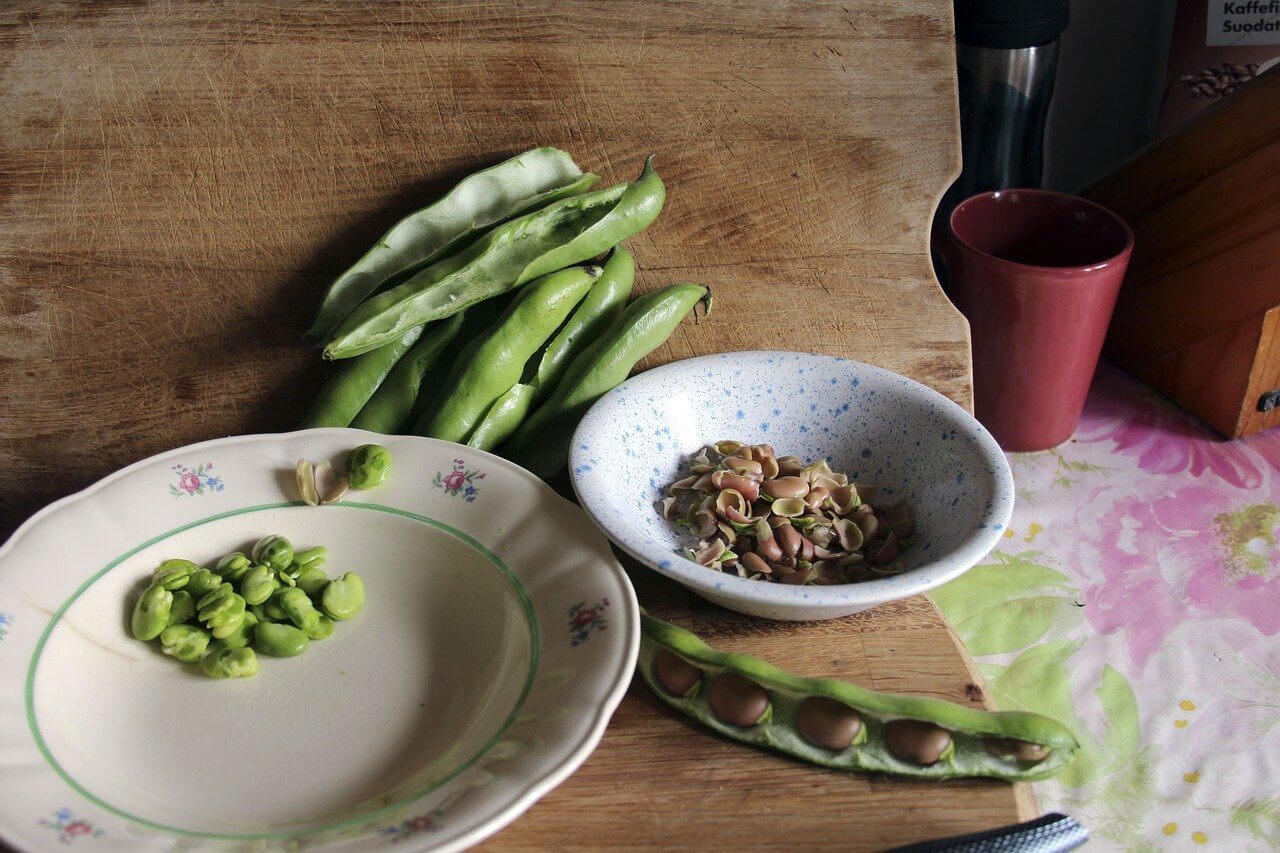Broad beans are a great, versatile vegetable, that have a great deal more that is good about them than memories you might have of them in a soggy pile on a plate at your Granny’s Sunday dinners. They are delicious, versatile, very good for our general health – and there is a huge variety of different things that can be done with them, both cooked and otherwise. Read on to learn more about what to do with broad beans.
Health benefits of broad beans

These little beans are not only delicious, but also very good for you. They contain a lot of protein, which is good for muscle development, and they are also high in fibre which is good for the digestion, and can even help to lower cholesterol.
Another benefit is the trace minerals; broad beans contain Phosphorous, Magnesium and Iron, plus almost all of the B vitamins.
They may also be very good for pregnant mothers, as studies have shown them too be high in Folate, which can help prevent birth defects.
Broad beans also contain antioxidants, making them a great choice for anyone who wants to improve their immune systems in general.
They can improve bone density, thanks to the Copper and Manganese that they contain, and they have been shown to increase vitamin C absorption, thanks to their Iron content.
What to do with broad beans
A better question to ask would be – what can you not do with broad beans? They are so versatile; you can do just about anything with a broad bean. They are not often used in sweet recipes, but anything savoury is the best friend of the broad.
They need to be taken out of their outer pods, and some recipes ask for the waxy outer coating to be removed too (this is known as double podding), but you can happily eat these too, so it is down to personal choice.
Broad beans can be eaten raw or cooked, and you can use them by themselves or as part of another recipe. They are also great substitutes in some surprising recipes – did you know that you can make broad bean humus? How about pesto?
Or, if you are just interested in the health benefits, you can also juice them or add them too smoothies.
Here is a little video showing you the most simple way of cooking broad beans:
Broad bean recipes
A. Cooked
You can cook a broad bean just about any way you like. They can be boiled, roasted, fried; they can be left whole or smashed (they won’t turn creamy like a potato will, but it will change the texture of the bean).
Broad beans go particularly well with Mint and bacon; something about these two flavours enhances the bean’s natural taste.
Broad bean pesto is great fun to make, and here’s how you do it:
- Cook 300g of broad beans in boiling water for 3 minutes, then drain and run under icy water to cool them.
- Squeeze the beans out of their outer skins.
- Fry 2 garlic cloves and 3 chopped anchovy fillets until golden.
- Stir in the broad beans.
- Crush the whole mixture in a bowl with 25g grated Parmesan, the juice and zest of half a lemon, and 3tbsp olive oil.
- This is excellent stirred through pasta, and will keep for about 3 days in the fridge.
B. Raw
Eating broad beans can be as simple as slipping them out of their velvety pods and munching them down – you don’t have to do any more than this!
Or you can add them to salads (it’s best to remove their outer skins if you do this, because the skin can be a little tough).
Here is a great broad bean salad recipe:
- Cook 80g quinoa according to packet instructions.
- Double pod the bans, or leave them as they are – it’s up to you which you do.
- Mix the quinoa with the broad beans and add 100g each of rocket and baby spinach.
- Crumble over 30g of feta, then serve with your favourite dressing.
C. Pickled
I’ve said it before, and it’s still true – you can pickle just about anything, and broad beans are no exception!
- Rinse the beans and place them into a jar.
- Add some dill sprigs and a handful of crushed garlic, and a pinch of peppercorns.
- Combine equal parts of white vinegar and water in a pan (about a cup of each).
- Add a heaped tablespoon of sugar, and a teaspoon of salt.
- Heat the liquid until the sugar has dissolved, then allow it to cool before you add it to the jar.
- Place the jar in the fridge and leave for 2-3 weeks before you eat them.
Can you freeze brad beans
These little guys respond very well to being frozen, and this is a great way to store them so that you always have broad beans to add to a dish. All you need to do is blanch them in boiling water for a minute or two, then plunge them straight into icy water.
Next, place them into freezer bags with the name and the date they were frozen, and you can store them in your freezer for up to a year.
Read also: How To Get Rid Of Blackfly On Broad Beans
What to do with broad bean plants
It’s not just the crops that are useful; spent broad bean plants are also excellent garden mulch. Once you have harvested your crop, dig up the plants and transfer them to your compost pile.
They will rot down and release all their nutrients, giving you some great fuel for your garden in the following year. You can use this to grow new beans!
Final words
Broad beans are a delicious vegetable, that is packed with great health benefits. Not only this, they are versatile and can be used in a large variety of different dishes, and will add a taste of summer to anything you cook.





